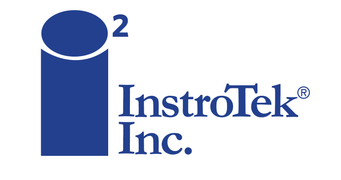
Summary: Nuclear moisture/density gauges have not changed in principle of measurement or calibration for the last thirty years. The purchase of a new gauge does not guarantee more accurate results. Old and new gauges measure the same parameters, namely density and moisture with the same precision and accuracy. You should consider three items before trading in your nuclear moisture/density gauge. Gauge precision, repair costs, and source capsule integrity. After reviewing this brief report, you will realize that the purchase decision of a gauge is mainly a financial justification issue and not dependent on gauge accuracy: precision or integrity. So next time a salesmen push you to buy a new gauge consider the contents of this paper and get technical justification on their claims.
1. Gauge Precision
Precision or repeatability of the gauge is defined as the variation in repetitive density reading on the same test spot for a given counting time. Precision is calculated based on the equation (P= ✓count/ Slope), which depends on the number of counts collected during a given period and the volume of the test material measured by a specific gauge at a given depth. Precision for a typical gauge for a one-minute reading at the time of manufacture is ±0.5 pcf at backscatter and ±0.25 pcf at 6" direct transmission depth. After 30 years of operation. the precision for the same gauge will be reduced to ±0.69 per and ±0.35 per at backscatter and 6'"direct transmission (respectively). Due 10 the size (intensity) of the sources used in a typical nuclear moisture/density gauge, even after 30 years, the gauge precision is still well within the specified ASTM and AASHTO standard specifications. The moisture source has a half" life of 430 years and the reduction in moisture precision is insignificant. The expected precision table below shows the nuclear gauge precision over forty years for a one minute count time.
Expected One Minute Precision for Nuclear Density Gauges Over Forty Years:

Reviewing the table, you will note that the gauge prec1s1011 at backscatter for moisture/density gauges, even after forty years, is as good or better than a new thin layer gauge (±1 pct;, .. thickness) marketed today for asphalt pavements. In conclusion, the precision of the gauge is not a consideration when making a purchase decision for a new gauge.
2. Repair Costs
Review its repair history when considering a trade or disposal of your old gauge. Compare the costs to maintaining other newer gauges in your fleet. Make your gauge purchase and disposal decision based on the maintenance costs of your old gauge per year and the new gauge price. When you perform this investigation, you will likely find a maintenance cost of $300 to $500 per year over the life of the gauge, for your new and old gauges. Can you justify the price of the gauge disposal and the purchase of a new gauge? If you arc paying too much for gauge repair, there are qualified repair facilities, other than the manufacturer that can offer you reduced repair rates. Also, many of these facilities have parts that can reliably repair your gauge for many years.
3. Source Capsule integrity
Radioisotope sources used in the nuclear gauges are double encapsulated. The Cs-I37 source capsule is welded inside a source rod and the Am24l: Be neutron source is enclosed within a container inside the base. In effect, the capsules used in these gauges are triple encapsulated. Source manufacturers specify a 15-year life for the source capsule integrity. However, this specification is based on economic considerations by the manufacturer and has no technical merit. In fact there is technical data available for environments much more aggressive than construction (oil well logging) where these sources have performed in excess of thirty years, without any problems. Also, the history of nuclear density gauges used in construction should be checked. Some gauges are well over 35 years old, have operation issues problems, and are still reading the density and moisture content of the materials as accurately as a new gauge.
This short report is written by Ali Regimand. Nuclear Engineer and inventor of several moisture/density gauges and calibration methods. The objective of this paper is to help gauge users in their new gauge purchase decisions and allow them to ask the appropriate questions when hit by unrealistic sales pitches. For more information, contact Ali Regimand at 919-875-8371 or aregimand@instrotek.com. February. 2000
